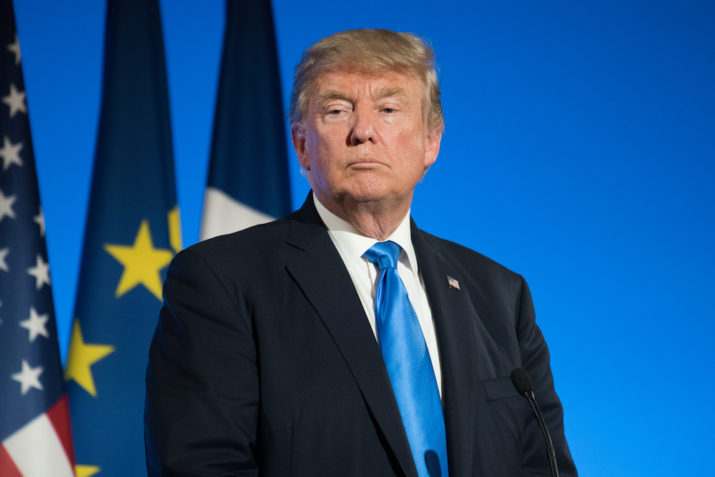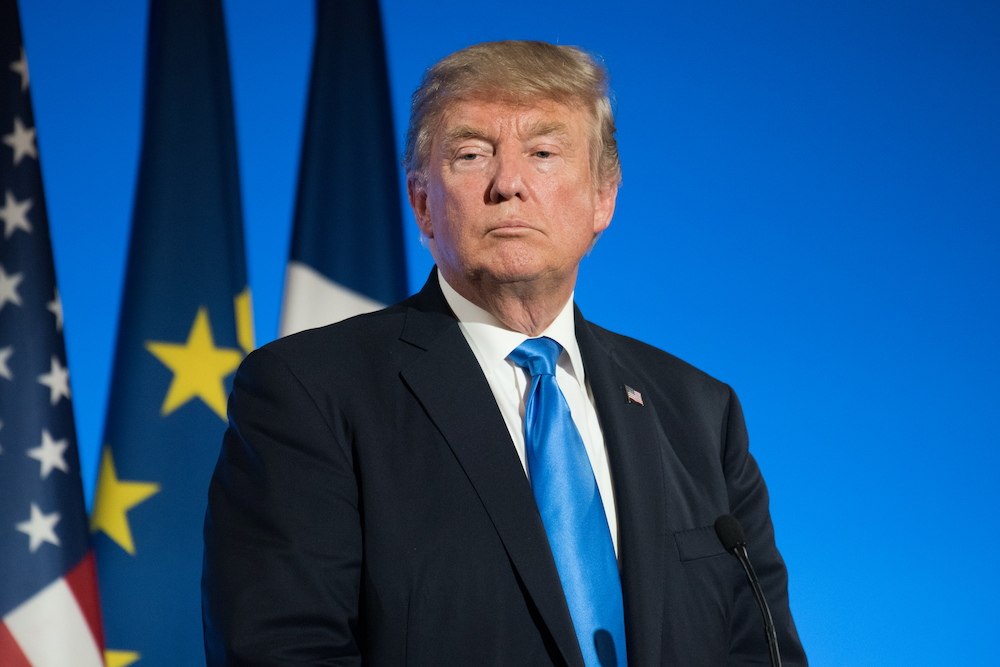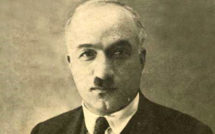

As any student of history can attest, there are times when the voices of the past prove eerily relevant to the present. Listen to those of the neo-Marxists and of related schools of thought, namely the Frankfurt School of critical theory, and you’ll hear echoed projections of the age of mass media. More specifically, you’ll hear about the age of Trump.
Two major exponents of the Frankfurt School, Theodor Adorno and Max Horkheimer, fled fascism in Germany and were aware of the disasters emerging out of Marx’s call for liberation, totalitarian megaliths that did the very opposite: brutally oppressed. But they understood the flaws in the predominant alternative as well: democracy and the capitalism to which it was inextricably linked. Indeed, they came to see this alternative as having similar chains, albeit better disguised ones, tying into the fears of their predecessor Antonio Gramsci, whose imprisonment by Mussolini eventually led to his violent death.
Adorno, Horkheimer, and Gramsci would’ve been entirely unsurprised at what we’ve all become, what they essentially foretold and feared, seeing its earliest manifestations: alienated things living in small boxes entertained by multiple smaller boxes that guarantee our alienation; we sit, exhausted from our daily labors that give us little satisfaction—we’re merely a means to an end of efficiency, to borrow from Marx—left with just enough energy to bask in the glow of our screens. The screens numb our alienation and reinforce it with entertainment that does little to challenge us; it’s designed as such, because that’s what sells, and to sit and contemplate is a threat to all rulers.
To sit and contemplate is a threat to all rulers.
And so we whittle away our leisure time, earned time, staring into our phones and televisions and using our little earned capital to buy what we’re told will make us feel less alienated. When that does little to help, there’s always something else to consume with the same promise. Perhaps we’re even aware that we’re part of this vicious cycle, but a more meaningful path is simply too difficult to travel—struggling for a cause? Change? This awareness and lack of initiative is the ultimate triumph of advertising, Horkheimer says. Gramsci would have seen it as something far worse, which we’ll soon come to.
Art, Adorno and Horkheimer tell us, can potentially liberate us. It can end our alienation by connecting us in space or at least in thought, through dialogue. It can grant us fresh perspectives and ideas that allow us to better scrutinize our bonds and learn how to break them. True art, that is. But true art no longer exists, if it ever did—neither philosopher lived to witness Jeff Koons’ “gift” to Paris, or Maurizio Cattelan’s 120k banana, but they saw how, over the course of the twentieth century, the market was quickly learning how to harness art, particularly in America. Not even conceptual art, which sought to challenge existing hierarchies, would be spared—its concepts would become nothing more than selling points.
Art, Adorno and Horkheimer tell us, can potentially liberate us.
What came later, Pop Art, exemplifies the market’s ever-tightening grip over the art world; Warhol explicitly linked his work with consumerism before Koons mastered product placement. And to be an artist now hoping to create the new avant-garde, to rupture the profit-driven boundaries? You’ll likely have to first pay $38,000 a year to get your MFA. Art, we know, has become a consumer product itself, and because of this, should perhaps no longer be considered art at all.
As capitalism rose, Adorno and Horkheimer identified something else: that what sells best is what’s easiest to relate to—what’s closest to mass appeal. This is why all art forms began to standardize, any variation merely serving to mask sameness, and we seem to have reached the pinnacle of this homogenization: we flock to see the same established artists exhibited in the same established galleries and gaze at their works through our phones, taking selfies and echoing meanings that have already been fed to us. We read the same bestsellers by the same authors and watch the same hit shows, enjoying the same tested themes of blood and sex. We argue over mere details because we already know the story. In essence, we have “the freedom to choose what is always the same,” Adorno and Horkheimer write. We thus have the culture industry, its cloned results emanating from our screens—mass media, our entertainment, ensnares us, dictating our social norms and taboos.
In essence, we have “the freedom to choose what is always the same.”
Here’s where it gets particularly dangerous. As Gramsci notes, we all live within the parameters of social norms and taboos, which form our culture. And if these are determined by the culture industry that functions to profit off us and our alienation, we essentially find ourselves living in not so much a democracy, but what Gramsci calls a cultural hegemony. We’re governed by increasingly few, massive corporations and their public faces, those who’ve come to replace the religious icons we once worshipped. These are our “substitute images of the divine,” Adorno writes; celebrities and influencers endlessly parade before us, swelling in power with each “Like” we burn as offerings, and every endorsed product we buy to look and live like them. Because maybe then we’ll be happy.
They and those they represent are our cultural hegemons, and we are their indentured servants; half-heartedly, we pose as free people. Yet, they too have a master whose own profits are linked and largely determined by theirs: it’s only natural that he’s a media celebrity himself, born and raised by traditional media and strengthened by its modern appendage: social media. And it’s only natural that he’s also the head of the nation that embraced capitalism from its onset. A nation that’s largely an expression of this ideology from its founding pitch as a place of freedom and opportunity: the United States. Is it really any surprise that the American Dream is proving to be little more than a selling point? Studies abound demonstrating the true lack of socio-economic mobility in the country, not to mention the rise of hate crimes and discrimination in a place that once promised sanctuary to emigres like Adorno.
Trump is our preeminent cultural hegemon, a product of our culture as much as a disseminator of it. He’s no doubt what Gramsci, Adorno, and Horkheimer all dreaded, a fresh, capitalist reiteration of the fascist dictators who ruined their lives and countless others, dictators who understood the power of mass media to control their populations—propaganda, we know, was their closest ally. They understood how to hijack the media with their powerful voices and demented visions to make their nations’ norms and taboos those promoting fear. And by doing so, they created the cultural hegemonies that allowed them to rise and keep power.
Trump is our permanent cultural hegemony, a product of our culture as much as a disseminator of it.
What happens when the media—a modern, far mightier media—is again hijacked by another powerful voice and demented vision? With each tweet he writes and word he utters, Trump, as the ultimate manifestation of late capitalism, innately creates and reinforces norms of white supremacy, mass shootings, Ukrainian meddling, alternate facts, fake news, and taboos of Muslims, immigrants, climate change, and liberals. Without second thought, he therefore uses the same time-tested tool of fear and market-tested tool of alienation to endure—he feeds off those alienated from a world much more brown or gray or rainbow than they like, those understandably afraid and incapable of change. At the same time, the controversy he stirs is debated across every outlet, an endless ad ensuring he’s endlessly consumed, and that we swallow rather than choke. And lo and behold, despite every effort to topple him, there he remains, our pseudo-emperor, our demigod.
In this context, his immortality and infallibility are easy to understand: our society buttresses him. It may sound cliché, but there’s something fundamentally true in cliché, and so it must be said: in order to destroy him, you have to destroy the society that created him. You have to destroy or at least drastically alter the norms and taboos of the capitalist cultural hegemony that has been at work for over a century, finding new and better ways to keep us alienated, to keep us consuming. To keep art from ever liberating us. Such a war, which a few are finally undertaking, is still largely impossible to win, but there’s some hope.
In order to destroy him, you have to destroy the society that created him.
Trump—and what he represents—will soon face a decisive battle whose result will likely determine society as a whole once it’s over. Should he lose, society might very well begin to crack along the seams Adorno divulged in the false promised land of America before he returned to Europe. And should he win—a more likely scenario considering the teachings of Gramsci and the Frankfurt School—we know exactly what to expect.
Christopher Impiglia is a writer from Bridgehampton, NY. He is also an Adjunct Professor at New Jersey Institute of Technology and an editor of art books. He received an MFA in Fiction from The New School and an MA in Medieval History and Archaeology from the University of St Andrews.
He is a previous contributor to EuropeNow. His fiction, nonfiction, and poetry has otherwise appeared in Allegory Ridge, Columbia Journal, Entropy Magazine, and Kyoto Journal, among others. He was a Finalist in the 2019 Hemingway Shorts Contest and a 2019 Artist-in-Residence at Platte Clove Preserve.
Photo: The President of United States of America Donald Trump at the Elysee Palace for an extended interview with the French President | Shutterstock
Published on April 28, 2020.




